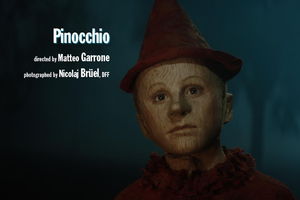Nicolaj Brüel, DFF, speaks about the shooting of "Pinocchio", by Matteo Garrone
A Romantic PinocchioGeppetto, a poor carpenter, makes a puppet out of a piece of wood, which he calls Pinocchio. The puppet will miraculously come to life and go through many adventures.

What was your visual approach for Pinocchio ?
Nicolaj Brüel : As in any movie I prepare for, I try to stay true to the images that naturally comes to mind when you read a script for the first time. For me that process is really important. I try to stay open to my imagination at this stage, so lots of the ideas and visual decisions come from that very first read.
The visuals you get from reading Pinocchio are quite strong. They can be haunting and scary at times. Collodi’s version is definitely strong and Matteo wanted to stay as close as possible to the original, so the trick was to find a good balance, still remaining true to Collodi, but not making the movie too frightening for children to watch.
Another important aspect when planning for this movie was to find an approach that could work with Matteo’s shooting style.
Matteo Garonne is not a director who works in a rigid way at all. The set is his playground and he really needs to be free to create on set, what - as his cinematographer - you will have to try to set him, as much as you can.
Is it still very dark and hard for a fairy tale ?
NB : A bit, maybe ? But you know, the dark elements were already a big part of the original tale... Collodi for instance wrote the hanging sequence, just like the turning of the two children into donkeys ... Besides, I don’t really think children are naturally afraid of the dark. To a certain extend I think that it has been projected on to them by their parents maybe... I personally think children are much more open minded than we are and I think they love everything that is a bit quirky and that it stimulates their rich imagination.
How did you keep room for spontaneity on such a production ?
NB : It was easier on Dogman where we shot in a relatively small area.
On Pinocchio, we shot pretty much all over Italy. Many scenes involved quite a lot of extras, costumes, and of course all the complicated makeup and prosthetics work for the lead actor and all the other creatures...
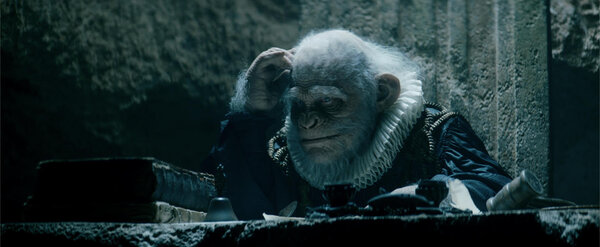
You want to have some kind of structure on a movie this size. Maintaining the shooting environment Matteo likes involves even more planning. In a way, the more loose and free you want to be, the more planning it implies.
We tried, with my gaffer Alex Bramucci, to pre-rig as much as possible, always trying to be one step ahead of things. It was an approach we developed early on, on Dogman when we realized the shooting style in which we were going.
We had a quite big area around the Dogman shop. A big square and several streets at different levels, but all relatively close together. So what we did, since we had a fair amount of nights in the script, was to light the entire area. Not with big condors and HMIs or anything like that, but rather by setting small lights sources everywhere we could think of. In the end we connected everything to a dimmer board and then we had control over the entire area, being able to switch on or off or dim up or down as fit.
It really worked out well and was not at all expensive.
On a couple of occasions, we had a couple of 10’s and 5’s kW tungsten Fresnels on the rooftops pointing down the streets. A light concept I had been longing to try for a long time. I imagine it must have been what the old masters had to do, in the old days, shooting on slow film stocks. I liked the look of it actually.
Did you set basic directions in pre-production for the light ?
NB : Some general ideas... For instance starting the opening of the film with a cold, snowy atmosphere, as to strengthen Geppetto’s financial distress, and his difficulties making ends meet. The end of the film, on the other hand, switches to a warmer summery mood.
I had a very good collaboration with Dimitri Capuani, the production designer, and his assistant. We experimented with stills from locations in Photoshop. This way we could both talk colors of sets, but also of the light mood.
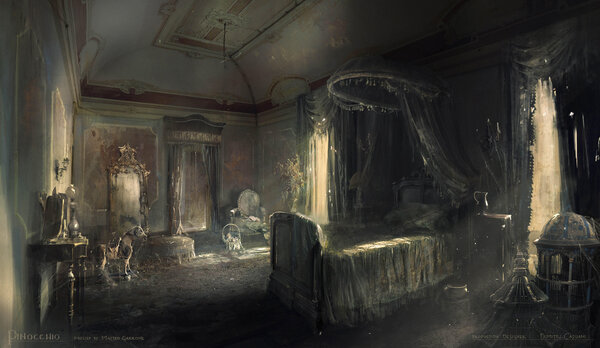
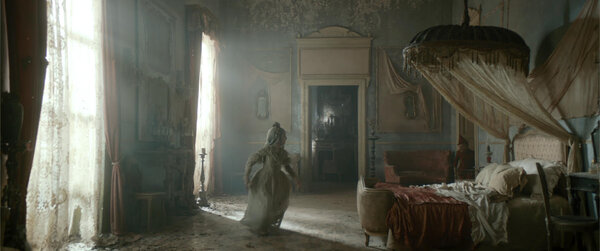
I found that very useful. As the film took shape in our heads, we agreed to play mainly with cyan, desaturated red elements, and also a little yellow. Keeping this simple color code allowed me to play complementary colors according to the scenes.
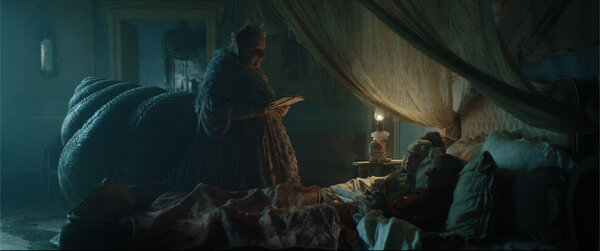
And Pinocchio ?
NB : Everything was done in camera with prosthetics and makeup. To shoot with the main character covered with full prosthetics is obviously very difficult... the young actor had almost only his eyes to play with. I also needed to be extremely watchful when lighting the latex material. Direct sunlight didn’t work on the prosthetic masks, so we broke the sunlight with 20x20 ft Hilight frames, or smaller when doing close ups.
The Hilight material still keeps a sunny quality, but softens the light enough for the prosthetic mask to make it look OK…
I think they made three different makeup versions of Pinocchio as to meet Matteo’s will.
One funny thing… talking about how you envision a movie… When I realized that Pinocchio was going to have a full costume in a bright red colour, all the imagined pictures I had in my mind of yellowish moonlit nights, fell apart ! I realized I would not be happy with red and yellow together and went for a cyany blue that complimented the red of Pinocchio beautifully.
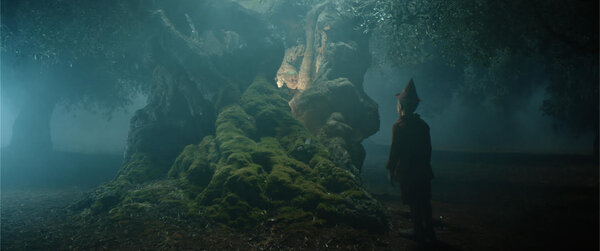
Do you use LUTs ?
NB : Yes absolutely ! I work very closely with my DIT (Fransesco Scazzosi). We spend some energy in creating our LUTs. On Pinocchio, we had about six or seven different looks for different scenes, I think. The looks are applied to the Alexa cameras so that what you see on the monitors is as close to the final vision as possible. I think it’s really worth the effort, because it’s helpful, not only for the director, but for the costume and art departments as well.
The time spent upfront creating those LUT’s is saved 10 times in color correction.
What Lenses did you choose ?
NB : We chose the Cooke Anamorphic SF as we did on Dogman. For the same reasons, really. Both Dogman and Pinocchio are dark tales. I like the softness of these lenses. I think a bit of romance goes well with darkness. Also the softness helps when shooting digital, I find.

Let’s talk a little about the hanging scene. Are we not in a romantic painting ?
NB : I take that as a compliment ! This sequence actually ended up very close to what I had imagined, when I read the script the first time. A dead tree, silhouetted against a smoky night sky. We were lucky because there was almost no wind that night, which made the smoke look very nice the way it placed itself in layers. We had a very soft cold source on a cherry-picker, and another a bit warmer to give a bit of a contrasting color on the two assassins, leaning against the foot of the tree ...
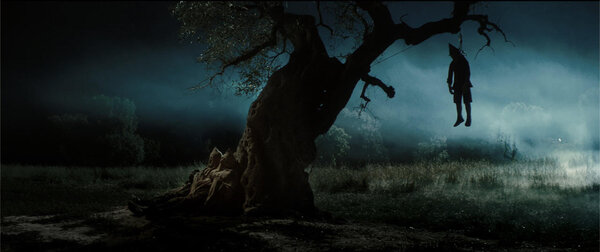
I think any cinematographer finds it challenging to make big exterior nights. Simply because there are no obvious light sources at night... The usual solution is to try to create moonlight, but quite often it has a tendency to look a bit artificial. I guess you can get away with it on a movie like Pinocchio because it’s a fairytale…
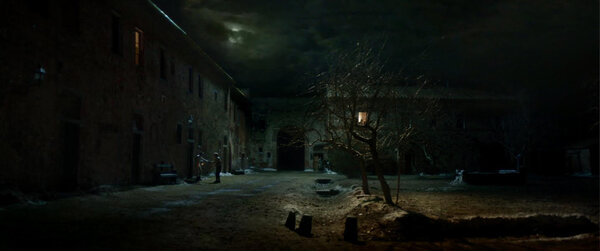
We tried something different for the scene where Gepetto comes out in the middle of the night, from his wooden workshop, yelling he has a son. It is a paved village courtyard, in winter, with small trees without leaves. I was still trying to make my yellowish night light concept work, back then. We used two 4 kW Gaffair balloons rigged to the bottom of a cherry-picker. In the basket we had tree Fresnel tungsten lights (two 10kW and one 20kW). It was interesting to mix the two different light qualities and colors.
(Interview conducted by François Reumont for the AFC)
Pinocchio
Director : Matteo Garrone
Director of Photography : Nicolaj Brüel, DFF
Production Design : Dimitri Capuani
Costumes : Massimo Cantini Parrini
Editing :Marco Spoletini
Special Makeup Artist : Mark Coulier
 En
En Fr
Fr
